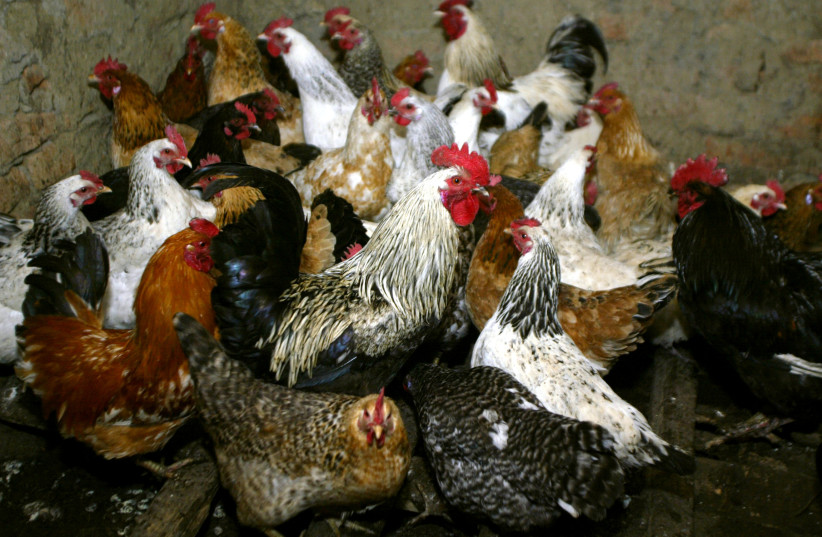A dolphin in Florida and a porpoise in Sweden were found to be infected with the H5N1 strand of highly patheogenic avian influenza (HPAI) in the first such cases ever recorded, local researchers confirmed in recent weeks, as the bird flu continues to spread through both birds and mammals across Europe and North America.
Researchers from the University of Florida confimed that a bottlenose dolphin found dead in Florida's Dixie County was infected with avian influenza.
“While obviously, the presence of HPAIV is a concern, the key takeaway for us is that additional caution should be taken by those handling or encountering wild dolphins during rescue events or while performing necropsies,” said Mike Walsh, D.V.M., a clinical associate professor with UF’s College of Veterinary Medicine.
Richard Webby, Ph.D., the director of the World Health Organization Collaborating Center for Studies on the Ecology of Influenza in Animals and Birds at St. Jude Children’s Research Hospital in Memphis, TN, stated while the virus has "some features that make further study and follow-up on mammalian cases important," it does not currently contain the features needed for transmission between humans and other mammalian hosts.
Webby added that the discovery of avian influenza in a porpoise in Sweden "almost certainly suggests" that the infected dolphin in Florida was not a "one-off, unique event."

Infected porpoise found in Sweden
The Swedish National Veterinary Institute reported at the end of August that a porpoise had been found stranded in Kämpersvik in southern Sweden and after repeated attempts to get it to swim out to deep water again, it was too exhausted and ended up dying within a day. An autopsy found that the porpoise was infected with H5N1 avian influenza.
"Unlike seals, where disease outbreaks caused by influenza viruses have been repeatedly demonstrated, there are only isolated reports of influenza viruses in cetaceans (a subcategory of aquatic mammals that includes whales, dolphins and porpoises). It is likely that the porpoise somehow came into contact with infected birds," said Elina Thorsson, game veterinarian at the National Veterinary Institute.
"Unlike seals, where disease outbreaks caused by influenza viruses have been repeatedly demonstrated, there are only isolated reports of influenza viruses in cetaceans (a subcategory of aquatic mammals that includes whales, dolphins and porpoises). It is likely that the porpoise somehow came into contact with infected birds."
Elina Thorsson
Avian influenza is infecting mammals at a higher rate
Avian influenza has been increasingly infecting mammals in the past year, although experts still estimate that the risk to humans remains low. In the current outbreak, only one person in the US and one person in the UK have been infected with the virus. Both exhibited light symptoms and recovered fully.
In July, the US National Oceanic and Atmospheric Administration (NOAA) declared an "Unusual Mortality Event" sfter over 150 seals were found sick or dead in Maine, with many confirmed H5N1 infections. Since June, over 250 seals have been found stranded in Maine, as of August 28, according to NOAA.
Multiple cases of avian influenza have also been reported in wild foxes, bears, raccoons, skunks and other mammals in the past year.
Current bird flu season 'largest ever'
The 2021-2022 epidemic season of avian influenza has been "the largest ever recorded in Europe," with over 5,300 cases of bird flu in poultry, captive and wild birds reported, according to a June report by the European Food Safety Authority. The authority warned that the persistence of the virus in wild birds may indicate that the flu has become endemic in Europe.
The CoBank financial services company reported on Wednesday that the shock to domestic markets in the US has been more severe in the current outbreak compared to the last outbreak in the US in 2014-15, with egg prices nearly tripling and turkey breast prices rising 60%.
CoBank projected that prices will take longer to drop this time compared to the last outbreak due to a variety of factors, including high labor and feed costs.
Over 43 million domesticated birds in 39 states have been culled or died due to the virus, according to the latest data from the Animal and Plant Health Inspection Service of the US Department of Agriculture. Hundreds of cases have been confirmed among wild birds as well.
In Canada, over 2.1 million birds have been affected by the outbreak throughout the country, according to the Canadian Food Inspection Agency.
Health officials are concerned that bird migrations in autumn will bring another spike in cases, with officials around the world, including in Israel, already preparing for multiple possibilities.
